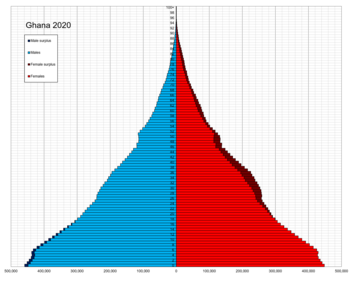Demographic features of the population of Ghana include population density, ethnicity, education level, health of the populace, religious affiliations, and other aspects.
Ghana's population is 30,832,019 (2021 census).[1]
- ^ data, 2021 Population And Housing Census-Ghana Statisical Service importance of. "2021 Population and Housing Census". census2021.statsghana.gov.gh. Retrieved 7 April 2024.
{{cite web}}: CS1 maint: numeric names: authors list (link)
